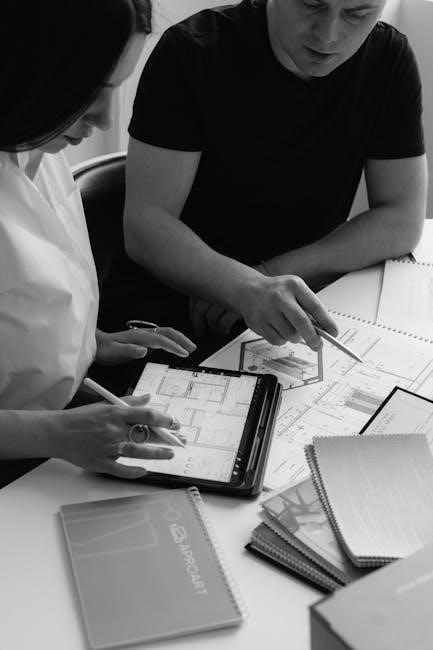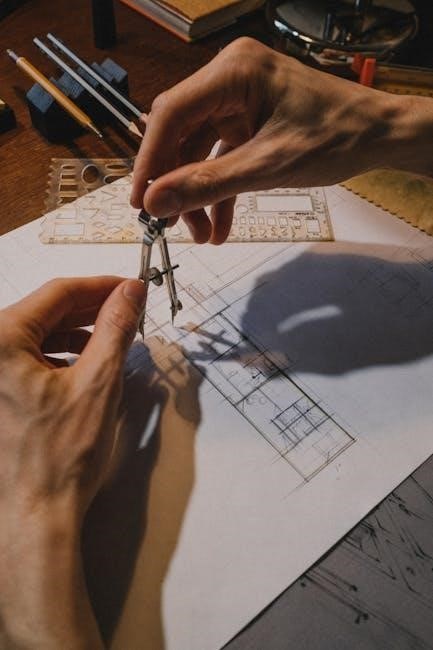dyke delta plans pdf
Dive into the world of Dyke Delta Plans with our PDF! Download now and start building your dream project. Get inspired and create something amazing! #DykeDeltaPlans
Dyke Delta Plans PDF: An Overview
The Dyke Delta JD-2, a unique homebuilt aircraft, gained popularity for its delta wing design and four-seat capacity. Plans are available, including scale model versions, often found within online communities and enthusiast mailing lists. Construction details and performance specs enhance the appeal.
The Dyke Delta JD-2 is an American homebuilt aircraft, conceived in the United States during the 1960s. Marketed specifically for amateur construction, it stands out as a monoplane featuring a retractable tricycle undercarriage, comfortably seating four occupants. A distinctive feature of the Dyke Delta JD-2 is its folding wings, designed for convenient towing or storage. These wings hinge upwards, positioning them flat above the fuselage, neatly one atop the other.
Construction employs a robust SAE 4130 grade steel tube framework, ensuring structural integrity. The aircraft’s unique design and accessible construction have made it a favorite among homebuilding enthusiasts. John Dyke designed, built, and first flew the prototype in 1960.
Historical Context of the Dyke Delta Design
The Dyke Delta JD-2 emerged in the 1960s, a period of significant innovation in aviation and homebuilt aircraft design. Inspired partly by delta-wing jet aircraft of the 1950s, John Dyke sought to create a practical and accessible flying wing design for amateur builders. His vision resulted in a four-seat aircraft characterized by its unique delta wing configuration and folding wings. The design aimed to balance aerodynamic efficiency with ease of construction, utilizing a steel tube framework.
The Dyke Delta quickly gained popularity within the homebuilding community, offering an alternative to more conventional aircraft designs. Its historical context is rooted in the experimental aviation movement, where individuals pushed boundaries to create innovative aircraft. Dyke flew it more than 2000 hours, making his and its last flight together in 2012.

Key Features and Specifications
The Dyke Delta JD-2 showcases a delta wing, folding wings for storage, and retractable tricycle landing gear. It features a steel tube framework and offers seating for four, blending unique design with practicality;
Design Characteristics: Delta Wing and Folding Wings
The Dyke Delta JD-2 is immediately recognizable by its distinctive delta wing configuration, a design choice influenced by 1950s jet aircraft innovations. This wing shape contributes to its stability and performance characteristics. A key feature is the ability to fold the wings, allowing for easier storage and towing.
The wings hinge upwards to lie flat above the fuselage, one on top of the other, a practical design element for homebuilt aircraft. This folding mechanism enhances its appeal to builders with limited hangar space. The delta wing provides ample lift and contributes to the aircraft’s unique aesthetic.
The overall design reflects a blend of aerodynamic efficiency and practical considerations for amateur construction. This distinctive combination has cemented the Dyke Delta’s place in homebuilt aviation history. This feature is the key to what makes the Dyke Delta so special.
Construction Materials: Steel Tube Framework
The Dyke Delta JD-2’s structure relies heavily on a robust steel tube framework, specifically SAE 4130 grade steel. This choice of material provides the necessary strength and rigidity for the aircraft’s unique delta wing design. The steel tube framework forms the primary load-bearing structure of the fuselage and wings, ensuring structural integrity during flight.
This construction method, while requiring welding and fabrication skills, offers a durable and relatively straightforward approach for amateur builders. The framework is then typically covered with fabric or fiberglass to create the aircraft’s outer skin. The use of steel tubing allows for the creation of complex shapes and joints, essential for the delta wing configuration and folding wing mechanism.
The steel tube framework provides a solid foundation for the Dyke Delta, contributing to its safety and longevity. Proper welding and assembly are crucial for ensuring the aircraft’s structural soundness.
Performance Capabilities: Speed, Climb Rate, and Landing Speed
The Dyke Delta JD-2 boasts impressive performance figures, making it an attractive option for homebuilt aircraft enthusiasts. Its cruise speed typically ranges from 180 to 190 mph, allowing for efficient cross-country travel. The climb rate, a critical factor for takeoff and maneuvering, is reported to be between 1400 and 2000 feet per minute, depending on temperature and engine configuration.
Landing speed is a comfortable 65 to 70 mph, contributing to the aircraft’s ease of handling during approach and touchdown. These performance capabilities are largely attributed to the aircraft’s aerodynamic delta wing design and efficient engine options.
Pilots have praised the Dyke Delta for its stable flight characteristics and responsive controls. The aircraft’s performance makes it suitable for both recreational flying and longer-distance trips. However, actual performance may vary depending on the builder’s skill, engine choice, and overall aircraft weight.

Availability of Dyke Delta Plans
Dyke Delta plans are primarily obtained from John Dyke himself, though unfinished projects and online mailing lists offer alternative avenues. Potential builders should research all available options thoroughly before committing.
Sources for Purchasing Plans: John Dyke Contact Information
The primary source for obtaining official Dyke Delta JD-2 plans is directly from the designer, John Dyke. His contact information, including his address at 134 Holmes Dr, Fairborn, OH 45324, and phone number, 937-409-0047, is readily available for those interested in purchasing the plans. Reaching out to him directly ensures you receive the authentic and complete plans needed for construction.
Contacting John Dyke is crucial, since he is the original source of the drawings. This also allows potential builders to ask specific questions about the design, construction techniques, and any updates or modifications made to the plans over the years. Ensuring direct communication can save time and prevent errors during the building process.
Remember to verify the current cost of the plans and the accepted methods of payment when contacting Mr. Dyke.
Alternative Sources: Unfinished Projects and Mailing Lists
Besides contacting John Dyke directly, alternative avenues exist for acquiring Dyke Delta plans. One option is searching for unfinished projects. Often, individuals who started building a Dyke Delta may, for various reasons, abandon the project, and offer the incomplete aircraft, along with the accompanying plans, for sale. These projects can be found on online marketplaces, aviation classifieds, and through word-of-mouth within the experimental aircraft community.
Another valuable resource is the Dyke Delta mailing list. These lists are online communities where builders, enthusiasts, and experts share information, resources, and support. Members often discuss plan availability, offer advice, and sometimes sell or trade plans. Scrolling through the archives or posting a request on the mailing list can lead to discovering available plans or leads on where to find them. Instructions on how to buy for plans are usually listed here. Be cautious when purchasing anything second hand.

Scale Model Plans
Beyond full-size aircraft plans, scale model plans for the Dyke Delta JD-2 are available, offering enthusiasts the chance to build smaller, flyable replicas. These models capture the unique design of the original aircraft.
Dyke Delta JD-2 Sport Scale Model by Laddie Mikulasko
Laddie Mikulasko’s sport scale model of the Dyke Delta JD-2 offers enthusiasts a chance to recreate this unique aircraft in miniature. Designed for either electric or glow power, this model captures the essence of the full-scale homebuilt. Mikulasko, a long-time fan of delta wing aircraft, created this plan after immigrating to Canada. The plan, suitable for an OS 26 4-stroke engine, is praised for making a great sport scale model.
Modelers can appreciate the unusual design of the Dyke Delta through this detailed plan. Access to this plan allows builders to experience the challenges and rewards of replicating a unique aircraft. Shared within online communities, the plan connects modelers worldwide, showcasing the enduring appeal of the Dyke Delta. The opportunity to build this model provides a tangible link to aviation history.
Availability of Model Plans and Articles from “Modelar” Magazine
Model plans and articles related to the Dyke Delta JD-2 have appeared in “Modelar” magazine, offering valuable resources for model aircraft enthusiasts. Specifically, the January 1980 issue featured a plan and article detailing the Dyke Delta JD-2, providing insights into constructing a real-vehicle model airplane. This publication serves as a historical record of model aviation, capturing the interest in the Dyke Delta during that era.
These plans, alongside accompanying articles, offered detailed instructions and drawings essential for building accurate scale models. The “Modelar” magazine provided a platform to share this knowledge with a wider audience of modelers. For those seeking to recreate this vintage design, archived issues or digital reproductions of the plan and article can be invaluable. The availability of these resources contributes to the legacy of the Dyke Delta.

Community and Resources
Enthusiasts connect through online forums and mailing lists, sharing experiences and technical knowledge. These platforms offer Dyke Delta builders valuable resources, including plan sourcing, construction tips, and collaborative problem-solving opportunities within the community.
Dyke Delta Mailing List and Online Forums
The Dyke Delta community thrives on collaboration and shared knowledge, primarily facilitated through dedicated mailing lists and online forums. These platforms serve as invaluable hubs for builders and enthusiasts alike, offering a space to exchange information, seek guidance, and showcase their projects. Members actively discuss construction techniques, modifications, and troubleshooting tips, fostering a supportive environment for both novice and experienced builders.
Within these online communities, individuals can access a wealth of resources, including archived discussions, shared documentation, and firsthand accounts of Dyke Delta projects. The mailing lists often feature announcements regarding plan availability, unfinished projects for sale, and upcoming events related to the aircraft. Furthermore, forums provide a platform for users to share their personal experiences, flight reports, and performance data, contributing to a collective understanding of the Dyke Delta’s capabilities and handling characteristics. These digital spaces effectively connect individuals, promoting continuous learning and advancement within the Dyke Delta community, ensuring the preservation and evolution of this unique homebuilt aircraft design.
Testimonials and User Experiences
The true testament to the Dyke Delta’s appeal lies within the experiences of those who have built and flown it. Testimonials from builders and pilots often highlight the aircraft’s unique handling characteristics and satisfying construction process. Many builders emphasize the rewarding challenge of working with the steel tube framework and the pride in creating a functional aircraft from scratch. Pilots frequently praise the Dyke Delta’s stability and responsiveness in flight, noting its impressive climb rate and comfortable cruising speed.
User experiences often recount memorable flights and unique modifications implemented to personalize their aircraft. Some builders have adapted the design to incorporate modern avionics or alternative engine options, showcasing the Dyke Delta’s adaptability. Stories of cross-country flights and participation in airshows further illustrate the aircraft’s versatility and enduring appeal. These testimonials provide valuable insights into the Dyke Delta’s real-world performance and the sense of accomplishment derived from building and flying this distinctive homebuilt aircraft, inspiring future generations of builders and pilots.
The Dyke Delta remains a significant aircraft in homebuilt aviation. Its innovative design and availability of plans have allowed enthusiasts to create and fly their own unique aircraft, leaving a lasting legacy.
Legacy of the Dyke Delta in Homebuilt Aircraft
The Dyke Delta JD-2, designed by John Dyke, holds a distinguished position in the history of homebuilt aircraft, celebrated for its unique delta wing configuration and innovative folding wing mechanism. Its impact resonates within the experimental aviation community, inspiring numerous builders to undertake ambitious projects based on its plans.
The aircraft’s distinctive design, featuring a steel tube framework and the capacity to seat four, has captured the imagination of aviation enthusiasts for decades. Availability of detailed plans has enabled builders to construct their own versions, contributing to a vibrant community centered around this iconic aircraft.
The Dyke Delta’s legacy extends beyond its physical presence; it embodies the spirit of innovation and self-reliance that defines the homebuilt aircraft movement. Testimonials from builders and pilots highlight its stable flight characteristics and impressive performance, further solidifying its place as a remarkable achievement in aviation design and construction.

